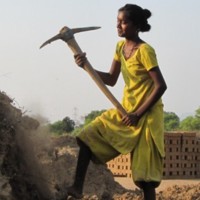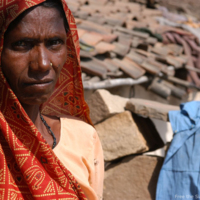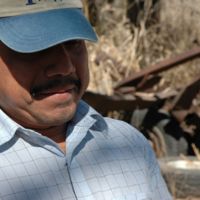
My name is Shanti. I do not know my age. I have five children. My contractor has said, “if you die I will take your dead body out of the mud and make you work to return my debt.” My husband died in September or October this year and the contractor gave me no money for his burial. The head contractor came the day before yesterday. I have a nine-year-old daughter and the contractor caught her hands, and said that he would force her to work to repay my loans. He says I owe 8000 rupees [$180]. My husband took the loan, and now that he has died the contractor is forcing me and my daughter to pay it back.
I tried my best to work somewhere else but if he does not let me go, what am I to do? He forces me to work for him. I break stones. The problem is that those big stones need to be brought out of the mountains. Some stronger person needs to do that job, my husband was doing it but now that there is no one to bring those stones. So whatever small pieces are lying there I break those. I break enough to earn 400 rupees [$9] and it takes me ten or 12 days to achieve that. I don’t even have a place to stay. I stay on someone else’s land. And when they tell me I have to move my little hut, I have to move it.
Narrative as told to Peggy Callahan for Free the Slaves, November 10, 2001, in Son Barsa, Uttar Pradesh, India.









